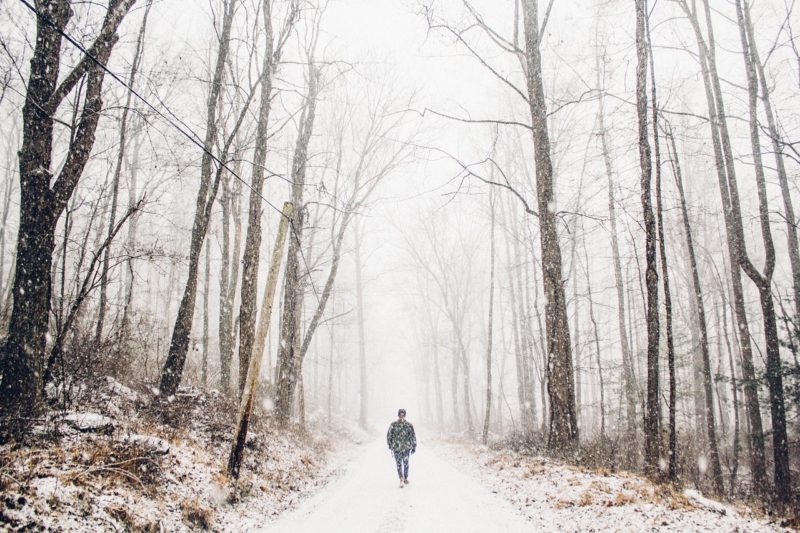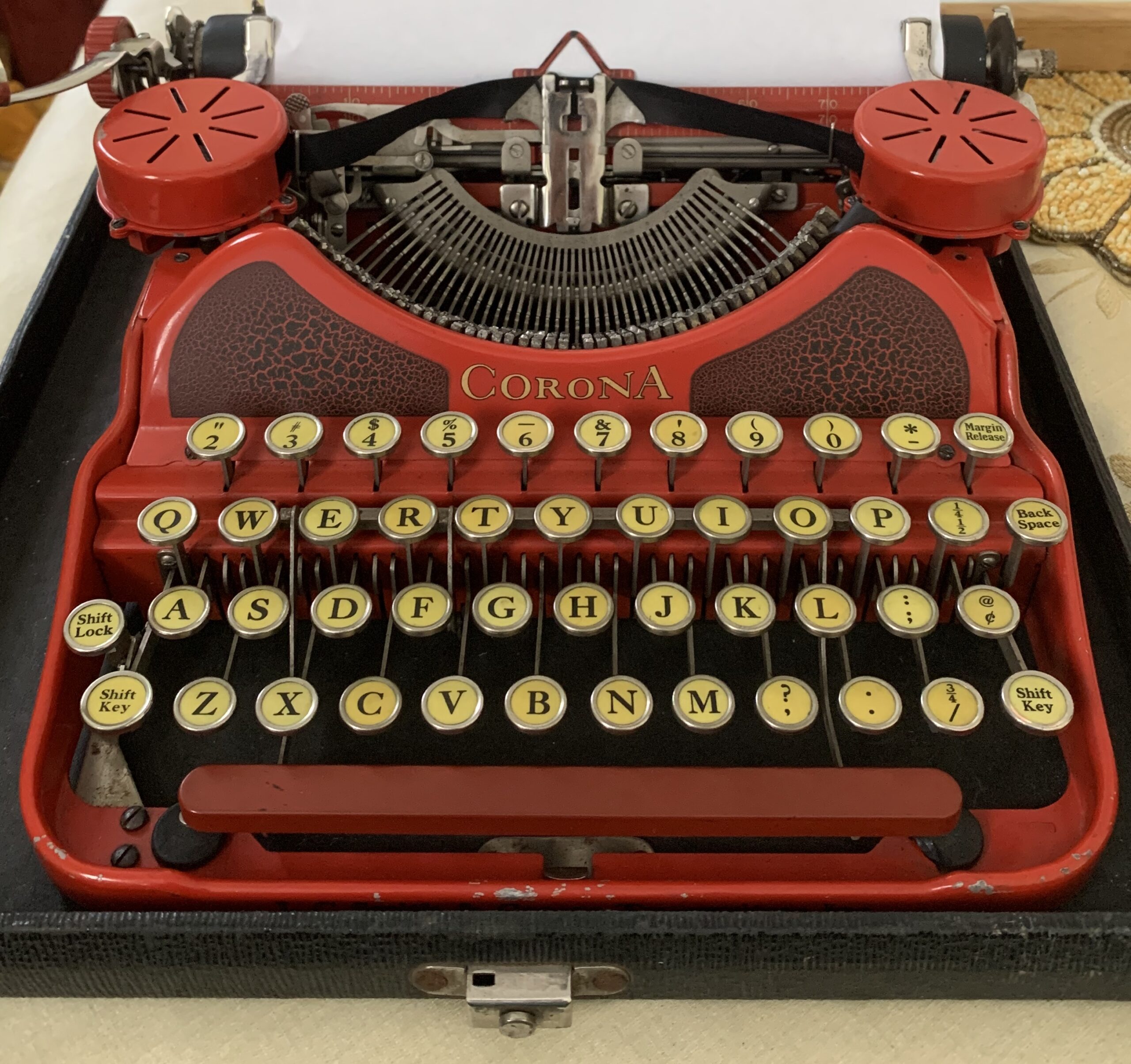Guess what. The walk poem involves a walk. The interesting thing is that there are so many ways for the walk to be a part of the poem, and the poem to be a part of the walk.
Writing poems about a walk has a long history, going back at least as far as to ancient Greek literature (Theocritus). Dante’s Inferno could be seen as a long walk poem. Edmund Spenser’s “Prothalamium,” John Milton’s “L’Allegro” and “Il Penseroso,” and John Cowper’s The Task are other famous walk poems. In ancient times—or even as recently as three hundred years ago—the notion of going for a walk was different from today’s notion, and so the walk poems that have had the strongest influence on modern examples began in the nineteenth century with poems such as William Wordsworth’s “An Evening Walk” and “Descriptive Sketches.” Also of note are the walk poems of his contemporary John Clare (such as “Careless Rambles” and “Mist in the Meadows”). Among nineteenth-century American poets, Walt Whitman’s “Song of the Open Road” is an outstanding example.
In the twentieth century the walk poem developed in different ways among a variety of poets, such as Guillaume Apollinaire (“Zone”); Robert Frost (“The Wood-Pile” and “Good Hours); Wallace Stevens (“An Ordinary Evening in New Haven”); Federico Garcia Lorca (Poet in New York); William Carlos Williams (Paterson, Book 2 and “The Desert Music”); Marianne Moore (“An Octopus”); Edwin Denby (“Elegy—The Streets” and many of his sonnets); Theodore Roethke (“A Field of Light” and “A Walk in Late Summer”); Elizabeth Bishop (“The End of March”); Sylvia Plath (“Berck-Plage”); Frank O’Hara (“A Step Away from Them” and “The Day Lady Died”); Gary Snyder (“Above Pate Valley” and “A Walk”); A. R. Ammons (“Corsons Inlet”); and John Ashbery (“Au Grand Galop”).
Also, a number of personal essays focus on walking, such as Richard Steele’s “Twenty-four Hours in London,” William Hazlitt’s “On Going a Journey,” Thoreau’s “Walking,” Max Beerbohm’s “Going Out for a Walk,” and Virginia Woolf’s “Street Haunting.”
There are at least four basic types of walk poems, of which there are a great many variations and blends:
- A poem about what the poet sees during a particular walk.
- A poem about a walk that produces a revelation of some kind.
- A poem whose length, style, and shape mirror the length, style, and shape of the walk.
- A poem that reflects the way the mind works during the walk. (When we’re out walking, our minds flow somewhat differently than they do when we sit at home.)
No single poem fully represents all these types and their variations, but one by American poet Bill Zavatsky (b. 1943) gives a good general sense of the genre:
Class Walk with Notebooks after Storm
“These puddles floating
down the street
must lead somewhere.”Or so I think
but don’t tell
the whole third gradetrailing behind me
stopped to lean on cars
or telephone polesscrawling their seeing
on spiral pads
or blowy paper sheets.I want them to stalk
their own lives, to see
that all of matter mattersand so—outdoors! Arms
flying into sleeves
down rickety stairsinto the rain-wet streets
all eyes and ears
with ballpoint pens alertto make sense of this town
that’s made them much
of what they are.A wandering pooch
plots afternoon smells.
I too lead my studentsby the nose, exhibiting
everything: the basketball
ogled by a fishtank fishin Don’s Hobby Store window;
the candy store’s weathered wood
—”like the gravestones”notes one melancholy
boy I can’t help patting
on the headhe reminds me so
of my gloomy self
at that age, when“Smile!” my parents chirped
“Smile!” and I would answer
“What is there to smile about?”“Write that down!” I urge
us both as we pass the diner
popping with pinball bells,ajump with light. “What
crazy kind of food could they
be cooking there?” I blurt,biting my tongue and begging
of the Muses
their forgiveness.Then unto the barber
—”He’s always standing there,”
a girl at the window muttersjotting down his white suit,
eternally folded arms,
the monumental bald headwhich ushers us toward
the adjacent darkness
deepening the Funeral Homeits dripping canopy
like a coffin maw
waiting to clamp shut.Each glowing clapboard
a stroke of chalk
on the blackboard of eternityso perfectly drawn
the whole shebang might
lift into heaven tonight!A turn onto Main Street,
we go feasting
on flashes of imagery:a stately 1928 engine
fenders drawn by eagles
pulling strands of firehouse goldglides past us. I think
of the gold five
Williams watched clangingthrough his darkened city
and his friend Charlie
Demuth painted, gleamingon a firetruck door
“Among the rain
and lights,” he wrote—like us, skirting
the sunlit puddles, the
fallen sky framedin odd nooks and crannies
all over town,
“Look down and seethe sky, the clouds.
Look at the mirrors
at your feet!” I shout,thinking how nice
to snuggle in a hole
the world has made for you,your job finally through
as part of the sky;
at last allowed to stareat the home you came from
all the time
intent on going back,Yes, everything’s looking up
A fireman’s rubber boot
smack in a wavery cloudas he motions that engine
(hunks of red and gold)
back to its berth, pausingto smile and let pass
two nyloned women scissoring
long legs overa slippery patch
of pavement, gliding angelically
while we scribble.Some bug bruiser splashing
his cuff, ticked off,
wipes and smirks.That dog, still following
us with long pink tongue,
pauses to lap up bitsof cloud, his eyes
mirroring the chills
along the water’s spine.And weather itself, crushed
by clumsy shoes,
regains composure,collecting itself in
the mantra of reflection
for a haiku:Puddles in the street—
at last the dog gets a chance
to see its own faceWe halt for mirrors, too:
a sundry shop of images
browsed by the glareof my own horse face
haloed by the faces
of the kidsshows me dawning
to the idea that
this little townwith its one main street
and local shops
is itself a collectionof knickknacks
balanced carefully
on a shelfin the mind of the boy
who lived where
I grew up!That is, me—
walking around
a new townletting my eye
embrace the real
like a hungry rosethat gulps a drop
of wetness, like
the roses thatexploded every spring
as my grandmother coaxed
with the clippers and hose.All of this pleasure
I squeeze from a morning’s rain
in residence around us.Let me tell my students
these puddles are fallen stars
they must write downwhose light will guide them
to where they live on earth,
scattered up and downthe streets we walk
all day, heaven grounded
temporarily, the skyone constellation shy
Perhaps the easiest way to start writing walk poems is to take a walk and write about what you see during it. It’s helpful to walk in a neighborhood or a natural setting that you don’t usually walk in, because there everything will tend to look fresh and interesting. If feasible, go alone, and walk slowly, from time to time directing your attention away from the things you normally notice; for example, look way up or way down, or only for red objects or tiny details, or only at things in shadow, or only at words on signs, or only at doors or clouds. But also feel free to open yourself to everything around you, as well as to your responses to those things. You might want to take notes, jotting down specific details. You could even write the whole poem as you go, though most poets seem to prefer to do the writing after the walk. Whichever way, you will find the walk itself much more vivid than usual, simply because you have devoted special time and your focused attention to it. As for form, there are endless possibilities. You could take a fourteen-block walk, writing one line per block, to form a sonnet; you could walk in the woods, stopping every ten paces and turning to focus on whatever hits your eye, and writing an instant haiku; or you could use free verse, allowing the poem to develop and form itself. As always, read as many walk poems as you can find.
Bibliography
Gilbert, Roger. Walks in the World. Princeton, N.J.: Princeton University Press, 1991.
Lopate, Phillip, ed. The Art of the Personal Essay. New York: Doubleday, 1994.
Zavatsky, Bill. “Class Walk with Notebooks after Storm,” in Educating the Imagination, Vol. 1. Edited by Christopher Edgar and Ron Padgett. New York: Teachers & Writers, 1994.
“The Walk Poem” is an excerpt from The T&W Handbook of Poetic Forms edited by Ron Padgett. Published originally in Teachers & Writers Magazine, Volume 31, Number 4, March 2000.



